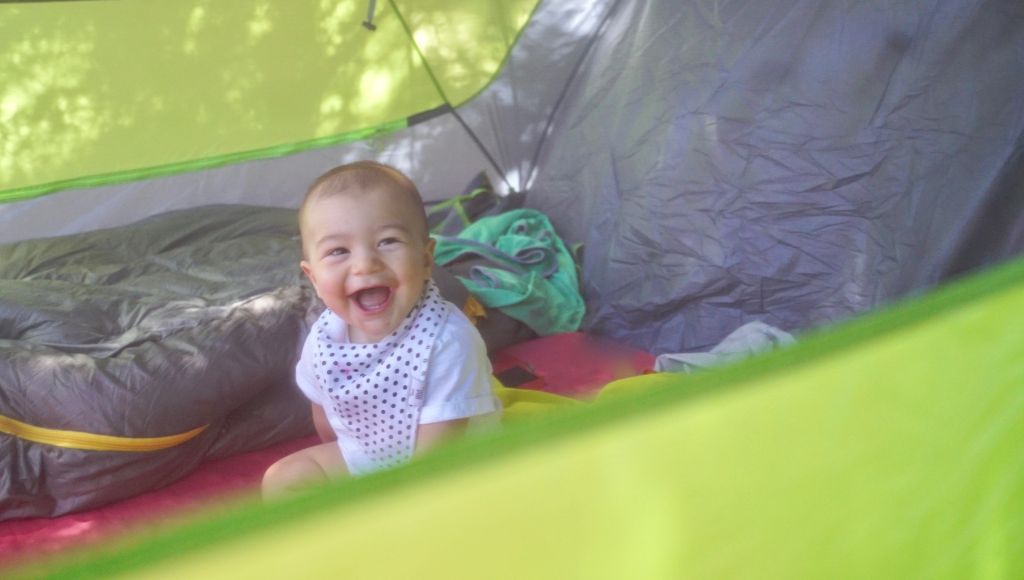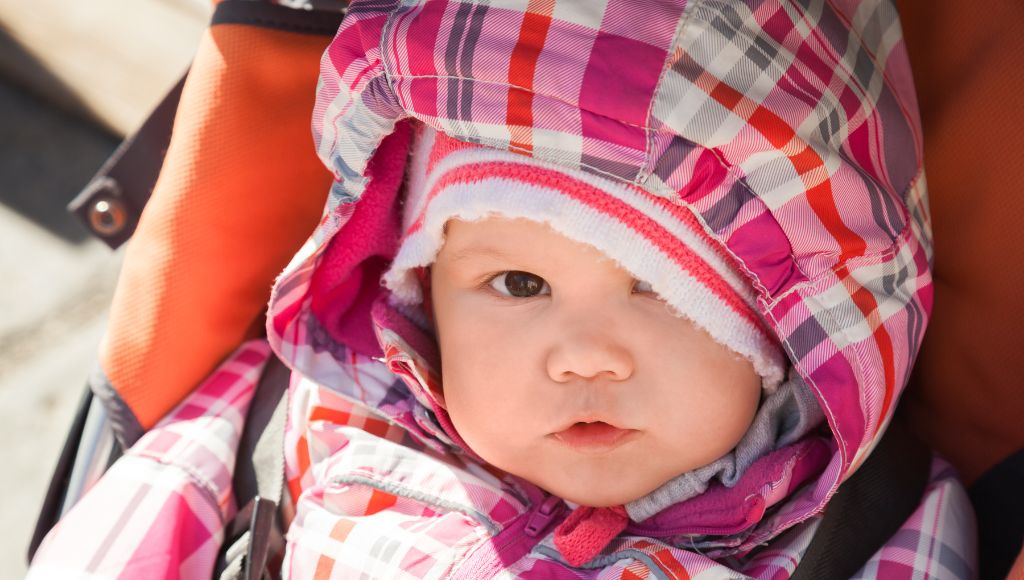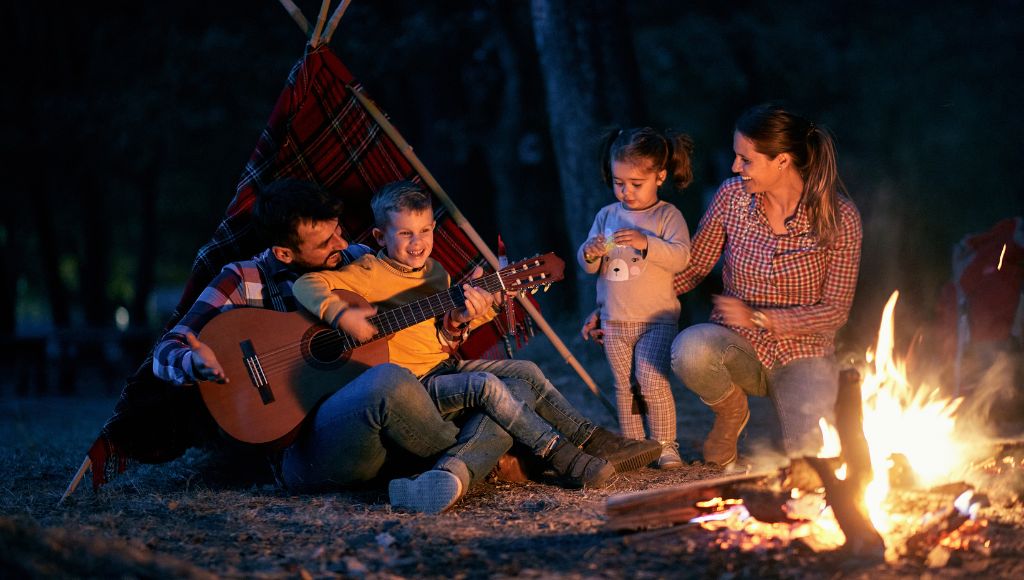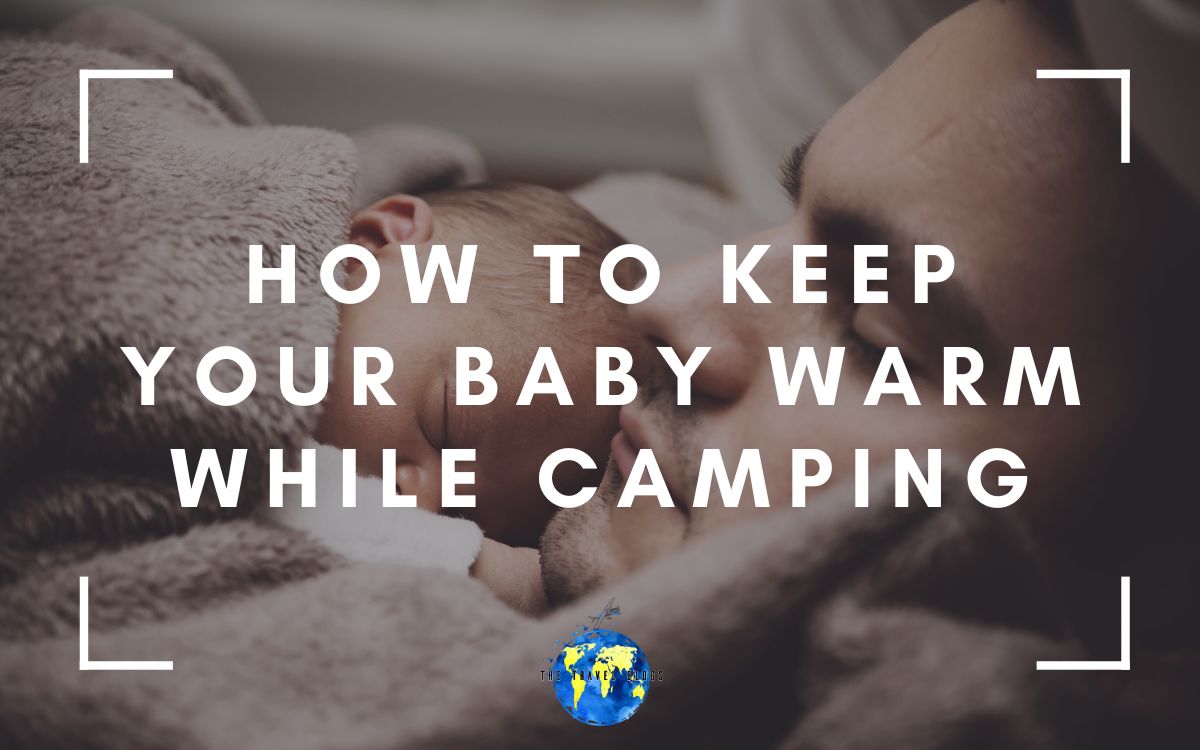Camping is a lot of fun for families you love the great outdoors, even in cold weather. But you may be worried about keeping the newest members of your family warm during this fun trip. First off, you should know that babies and toddlers can go camping in chilly weather, provided they are properly clothed and protected from chilly winds.
So, how do you keep your baby warm while camping?
It’s actually not hard. First, you need the right tent, appropriate cold-weather clothes, the right camping gear and some tips on how to keep warm. Here’s a complete guide for you, and it starts from the beginning; preparing to go camping in chilly weather.
Coming your way in this post - click to expand ->
Preparing for camping with a baby in cold weather
Keep track of the weather
Check the weather forecast before leaving for your camping trip, so you can pack appropriately. It’s usually better to bring extra wet-weather clothes and a fleece blanket, just in case you need them to keep your baby cozy and warm.
Remember that infants lack the capacity to control their body temperature in the same manner as adults and older children do. They will struggle to warm up if they start to feel chilly and frigid. So, you have to be extra attentive during your camping to determine whether they are cold. Keep an eye on the weather, also keep an eye on your kids.
Camp with a cold weather tent
One of the ways to prepare for a camping trip in chilly weather is to get the right type of tent. There are different types of tents built for camping in different seasons and weather conditions. And if you intend to camp out in rainy weather, then a cold weather tent is the right one for you. Cold weather tents are made to be completely waterproof, preventing leaks and moisture buildup that can leave you shivering in the morning.
The following tents are ideal for chilly weather:
- 3-season tents: generally speaking, a 3 season tent is one made for usage in the spring, summer, and fall. These tents are made to be portable, waterproof, windproof, and allow for maximum ventilation.
- 4-season tents. 4-season are also called winter tents. They are robust and constructed to withstand severe weather. They frequently have a lower profile, which allows them to withstand strong winds and snowfall.
Insulate your tent
Next to choosing the right tent is making sure it’s properly insulated. The floor of your tent can be insulated with a mat, rug, blanket or an insulated camping pad. Additionally, covering your tent with a waterproof tarp will help to retain heat inside while also keeping out dew, frost, and snow. If the weather is particularly windy, try to set your tent near natural windbreaks like trees. A warm tent will keep everybody warm, including your infant.
Pack extra clothes for layering
Bringing the appropriate clothing is probably one of the most crucial things you can do to keep your infant warm when camping. Camping is all about having fun outdoors, so you certainly won’t be keeping your baby hold-up in the tent all day. Pack the clothes that you can wear in any chilly weather.
Here’s an idea of what you might need:
- Baby coat: it’s very important to have a reliable cold-weather coat that will protect your baby from cold. The type of coat you need will depend on how cold the weather will get.
- Long pants: this is for protecting your baby’s little legs from chilly winds.
- Long-sleeved shirts. Just like long pants, long-sleeve shirts will protect your baby’s arms from cold air and biting cold.
- A warm hat: get a thick hat that covers their entire head and most of their face. Babies lose a lot of heat from their head, therefore it’s important to keep a baby’s head and face covered and warm.
- Wool socks and mittens for nighttime: pack some socks and mittens that allow for some airflow while still keeping your baby at a comfortable temperature. Wool socks and mittens are excellent for this.
- Don’t forget blankets, fleece pajamas, a warm sleep sack, and a cozy sleeping pad for nighttime.

How to keep baby warm during the day on a campsite
Cover up against the cold
When properly dressed, babies and young children can play outside in cold weather without discomfort… Here are tips on keeping your baby warm while camping!
- Dress baby in layers, starting with a soft cotton, long-sleeve shirt (or just a onesie) and pants as a base layer, top it with a sweater or coat, depending on how cold the weather is.
- Also add mittens, a warm hat, and boots with socks.
- Closely monitor your baby to prevent overheating. Your baby is overheated if they have a flushed face, are sweating, or feel warm to the touch. If you notice they are overheating, remove a layer or two and allow them to cool down.
- If your baby is in a stroller, dress them up and wrap them in a warm blanket.
Keep them active
You should already know that staying active is a great way to stay warm in cold weather. The same applies to kids too. If you have an active toddler, you can help them stay warm by keeping them active for most of the day.
Encourage them to move around and play with whatever toys they have. They can play hide and seek, play with balls, balloons, sticks, etc. You can also take them on a short hike, which is a great way to keep them moving.
Make sure they stay dry
The last thing you want is for your toddler or infant to be wet outdoors when the weather is chilly. Everyone obviously needs to take a bath, and that’s good, but dry them off and dress the baby in warm clothing as quickly as possible. Being wet just accelerates the freezing process because their bodies can’t manage temperature as effectively as yours can.
You also have to watch out for puddles, rain, or lakes, since kids love to explore their environment. And if they accidentally get wet, try to get them out of the wet clothes as soon as you can.
Wet clothing can quickly drop core body temperature in cold temperatures, which can cause hyperthermia. It’s actually better to prevent them from getting wet, you can do this by dressing them up in a waterproof outer layer of clothes.

How to keep baby warm at night while tent camping
Prepare for bedtime early
It’s important to get your child into some warm clothes as early as possible, especially when the weather is cold, as this helps them warm up before falling asleep.
As an alternative, prepare ahead of time and get them into their cozy pajamas and sleeping bags several minutes before they fall asleep.
This getting-ready period also serves as a reminder to your child’s body and mind that it is time for bed. For the first few nights, as they adjust to the new environment, be prepared to cuddle relatively more than normal before bed.
Children who consistently go to bed early, don’t wake up at night, and they sleep longer, which is probably what they need. Also, you’ll be glad to learn that babies who go to bed early typically sleep better. For the majority of babies, quality sleep occurs before midnight!
Warm up with a warm drink
Warm drink can help your baby sleep. Giving your infant a warm bottle of milk every night may be a soothing sleep signal, telling them that it’s time for bed. Milk is one of the most essential drinks to help toddlers enjoy proper sleep.
Also, the warmth that fills their little tummy when they drink warm milk has a relaxing impact. A warm beverage before bed helps soothe your kid and warm them to the core. If your child is still nursing, breast milk is naturally warm and will have the same warming and calming effect.
Use a sleep sack for extra warmth
A sleep sack will keep your little one extra warm and toasty through the night, which will help them sleep better.
Before you purchase a sleep sack for your baby, ensure that you;
- Choose the right size: the cozier the sleeping bag, the warmer your baby will be
- Check the temperature rating: on very cold nights, a TOG (Thermal Overall Grade) of 3.5 toddler sleeping bags is best to ensure your toddler stays warm throughout the night.
- Check for safety: make sure that it’s safe and approved for night sleep.
Use heat packs
You can use heat packs to keep your baby warm when the weather is very cold. Putting heat packs in their sleeping bag can help them keep warm and sleep comfortably all night. The amazing part is that they even become warmer when heat packs are placed in a sleeping bag or on their camping bed.
A hot water bottle can be used instead of a heat pad if one is not available. A water bottle offers the benefit of holding heat longer than a dry heating pad, although it’s not recommended to use a hot water bottle for small infants because you cannot effectively regulate their temperature, which increases the risk of burns. If you intend to use hot water bottles with your kids, ensure that you use only bottles with lids that are completely tight and impossible for kids to open.

How cold is too cold for a baby to be outside?
According to whattoexpect.com, babies should not be outdoors if the temperature is below -15 degrees Fahrenheit. But that is for minutes at a time, we’re talking about camping here, so that is unrealistic anyway.
However, weather can change quickly, so it is good to be aware and check the wind chill and wind speed frequently. Know the symptoms of frostbite and hypothermia, and keep outdoor outings to 15 minutes or less, also watch out for trembling and shivering.
On the other hand, you should make sure your child is not overheating by checking on them frequently. Overheating can cause a rash and discomfort.
Conclusion
Even as you can take your baby camping in the cold, how to keep kids warm on cold weather camping trips is usually a major concern when taking your infant to camp for the first time.
However, you should know that provided they are dressed adequately, they can be warm and comfortable. Just keep in mind that babies get cold easily, due to the fact that their bodies are less effective at regulating their body heat than those of adults.
It is improbable that camping with your kid would be too cold if you dress them in enough layers! A base layer, a wool layer, and possibly an insulated sleeping bag.
